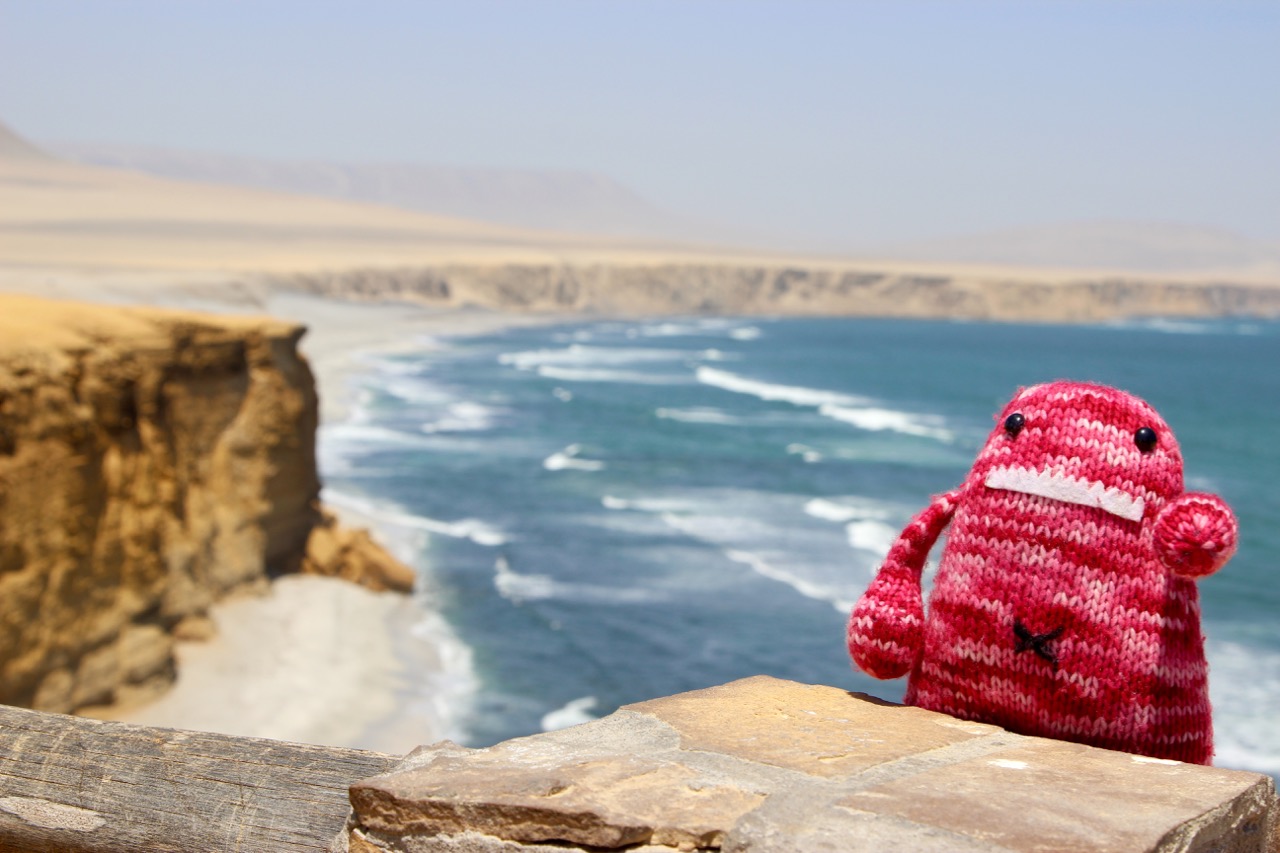Being from the midwest with almost zero desert experience, I draw heavily on my trusty knowledgebase of sci-fi when it comes to all things desert. Thus, I expect these things when I’m in a vast, sprawling desert:
- Muad’Dib
- Spice
- Giant sandworms and related sandy family members, such as the sarlacc
- Jawas and sand people
- Banthas
- Moisture farmers
Instead, I got:
- French bros and selfie stick-laden tourists
- Roads with bumps so large I nearly flew out of my seat
- Dunes for days
- Fresh, delicious fish?!
While I perhaps could be (ok, I am) slightly sad that the things from sci-fi are not real, exploring Paracas (Quechua for “rain of sand”) and its surrounding nature reserves for the day did not disappoint.
Paracas is a tiny oasis-esque town about three hours south of Lima, sandwiched between rolling desert dunes and vibrant ocean life. You can walk from one edge of the town to the other in about twenty minutes, and half of the town seems to be expensive resorts catering to domestic and international tourists alike.
It is known for its beaches, bountiful wildlife, and seafood. And sand. Our hotel front desk booked us two tours today, one of the Islas Ballestas and another of the Paracas national reserve for the afternoon.
Islas Ballestas
Situated about half an hour outside Paracas by boat, the Islas Ballestas are a wildlife reserve home to the South American sea lion, Humboldt Penguin, and at least one billion birds (as well as a corresponding amount of bird poop).
Our guide met us in the hotel lobby to shuttle us to a smaller dock north of town. We met up with a larger group of foreign tourists and one knowledgeable and funny Peruvian guide who spoke an array of languages. After brief introductions, he lead us to a boat which did not look like it would fit all thirty of us but somehow, magically, did. We took our seats in the rows between makey-outy French couple and douchey midwesterners with a Go Pro and the boat headed out to sea.
We sped over small waves in the Paracas Bay to our first destination: the Paracas Candelabra.

At this point, I realized the guy two seats in front of us had a selfie stick and would be proceeding to wave it about for the entirety of the tour. I silently prayed to the gods of tour groups that his phone would fall off the end of it or some bird would fly off with it within the next two hours.
From the mystery trenches, we bounced out to the jutting, cavey, bird-poo covered rocks which made up the Islas Ballestas.
The only other time I have ever seen this many birds in one place has been when I watched The Birds in high school and subsequently became suspicious of birds for about a week. Gulls, turkey vultures, pelicans, and other marine birds covered nearly every perchable space of rock.








Paracas National Reserve
The national reserve contains rolling sand dunes, red sand beaches, and once hid mummies from the Nasca and fossils from millions of years ago.
We piled into a Chinese-made fifteen passenger van with other tourists – les bros francais, quiet selfie stick guy, and old couple – and headed out into the desert.

We made a brief stop at the exploratory center before jostling out to view what was previously the Cathedral rock formation (before the 2007 earthquake destroyed it). Now, it’s just some pretty stripey cliffs battered by thundering waves. Les bros amused themselves by throwing rocks off the cliffs.


We scrambled up a steep dune and rolling rocky dunes spread as far as we could see from the top of our duney perch.
The Paracas national reserve has a red beach, caused by minerals from volcanic rocks. We made a brief stop to wander the beach and view the cairns left by other travelers.
Paracas and the general community rely heavily on fishing for income and as a food source. We made a stop to get lunch at a nearby town. My grilled sea bass was amazing.


The van dropped us off back at our hotel and we spent the rest of the afternoon relaxing around the hotel. It’s off-season and the pool was virtually deserted.
We have only a half day left here tomorrow before we head back to Lima for the rest of our time in Peru. :'(









